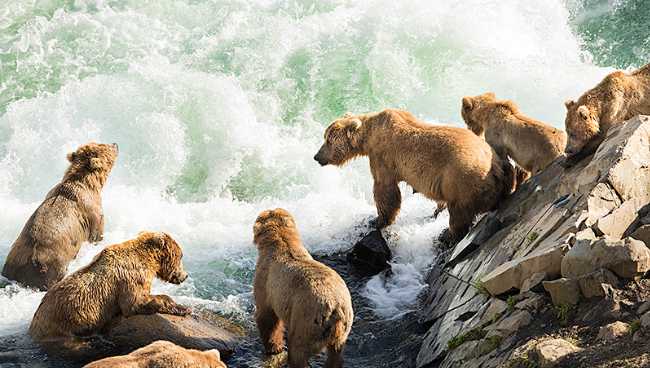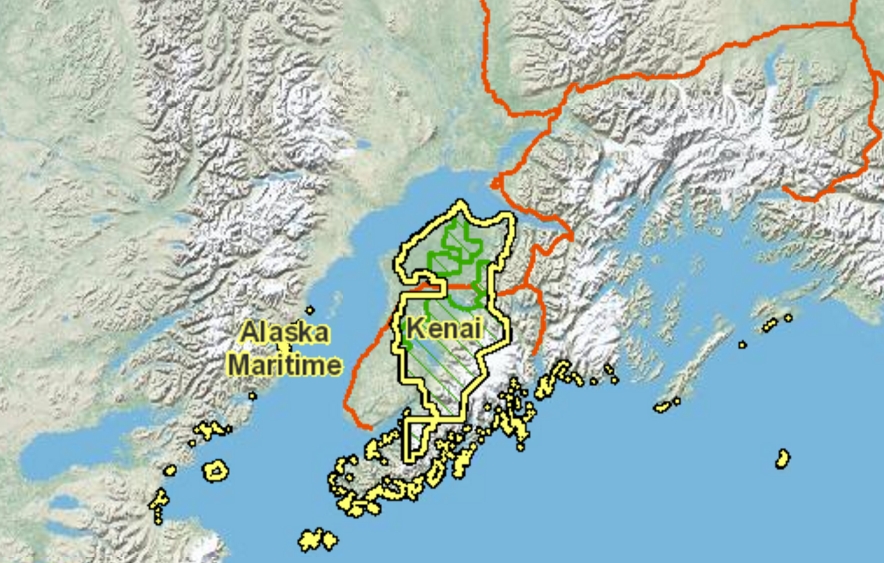
With the public hearing in Soldotna last night, the public comment period on the proposal to close the Fall 2014 and Spring 2015 Brown Bear hunting season on the Kenai Peninsula comes to an end.
In a release yesterday, the Governor’s office said, “Federal land managers have again proposed limiting Alaskans’ access to a state resource, the proposed closure is not justified by either resource protection concerns or federal policy. I strongly urge the Service to reconsider this action and allow state-authorized hunting to continue on the refuge.”
It was on August 12th the the U.S. Fish and Wildlife Service announced the proposed temporary closure on the Kenai Peninsula citing concerns that “additional brown bear hunting on the Refuge would likely contribute to a decline in the population.” They continued by saying that the protection measure was necessary to conserve all wildlife in their natural diversity. and to ensure ” continued opportunity for visitors to hunt, view and photograph wildlife; and maintaining wilderness character in the Congressionally-designated Kenai Wilderness.”
The decision to temporarily close the Brown Bear season on the peninsula came one day after the Center for Biological Diversity submitted a petition urging the refuge to enact a permanent ban on the hunting of Brown Bear on the Kenai Peninsula. The Center’s stated concern was that “Kenai’s bears have taken a beating ever since Alaska’s game commission loosened hunting rules. If the killing continues at this pace, these bears – which are isolated and genetically unique – could face the real possibility of disappearing from our public lands.”
A total of 54 Brown Bear were taken on the peninsula so far this year, 52 of which were sport hunted, while two were taken in the defense of life and property. As for interaction with bears on the peninsula, USFWS says of their proposal to increase bear population on the peninsula that is itself seeing an increase of human population, “Living and recreating in bear country always poses some level of risk. Negative bear encounters in the back country can be minimized by taking proper precautions, and in urban environments by instituting good management practices such as eliminating attractants around homes and businesses, and providing deterrents such as electric fencing around livestock.”
The Alaska Department of Fish and Game disagrees with their federal counterpart and believes that the proposed closure is not justified by either resource protection concerns or federal policy. Doug Vincent-Lang said in his written comments that the state uses the 2010 population assessment by USFWS and despite concerns utilizes the study as a starting point to evaluate both short and long-term sustainable harvest limits. He points out that the presentation to the board was a cut-off harvest level of either 70 overall or 17 adult females harvested that would result in an emergency closure. He also stressed that “the primary metric of sustainable harvest was and continues to be mortality of adult female bears,” and that the harvest would reach it total limit long before the harvest levels of female adults is reached effectively closing the season. Vincent-Lang said that in order to account for other sources of human caused mortality that the directed hunt would be closed down at a level of 66-67 total kills or 15 adult female kills.
Doug Vincent-Langs full written comments on the USFWS proposal can been read here (PDF)
USFWS’s Background info for the proposal can be read here. (PDF)








